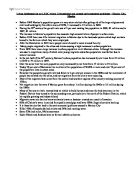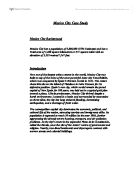Urban Settlement in an LEDC where Urbansiation has caused environmental problems - Mexico City, Mexico
Urban Settlement in an LEDC where Urbansiation has caused environmental problems – Mexico City, Mexico
- Before 1860 Mexico’s population grew at a very slow rate but after getting rid of the large religious and civil land holdings by the reform laws of 1859, it increased to 13 million in 1900.
- During the 20th century the growth rate was at 2 per cent making the population in 1990, 81 million and in 1997, 91 million.
- The increase in Mexico’s population has caused a high concentration of people in urban areas.
- Before 1910 there was little internal migration in Mexico due to the hacienda system which kept workers bound to the farm on which they were employed.
- After the Revolution in 1910 more people were allowed to move around the city.
- Many people migrated to the cities and towns causing a high increases in urban population.
- From 1930 there was a large increase in urban population in all Mexican states. Although this increase was due to migrations many of which were young migrants and urban population rose further due to natural increase.
- In the last half of the 20th century, Mexico’s urban population has increased by six times from 13 million in 1950 to 73 million in 1997.
- Over the same time the rural population only increased by one third from 17 million to 23 million.
- Today 50 per cent of Mexicans live in cities with a population of 50,000 or more and over 76 per cent of the population lives in urban areas.
- However the population growth rate had fallen to 2 per cent per annum in the 1990s and the movement of people has slowed into the cities, and out migration from the city is now occurring.
- Most of the migrants have come from the central and southern regions of the country making journey of 150km.
- Net migration into the state if Mexico grew from about 1 million during the 1960s to 3.5 million during the 1980s
- Many of the new arrivals wanted land on which to build homes and since the land was scare in the Federal District they turned to the surrounding area, particularly to the north of the Federal District, which his rapidly growing and industrialised.
- Migrants move into barrios know as shanty towns or bustees- created as a result of invasion
- 92% of Chalma’s water is carried from public stand pipe and have 100% illegal electricity hook up
- It is these barrios that lead to the environmental problems caused in Mexico City
- El Sol 50% of households lack toilets and 26% lack running water
- Santo 32% lack toilet, 8% homeowners
- Isidro Fabela and Jardines have no formal rubbish collection







